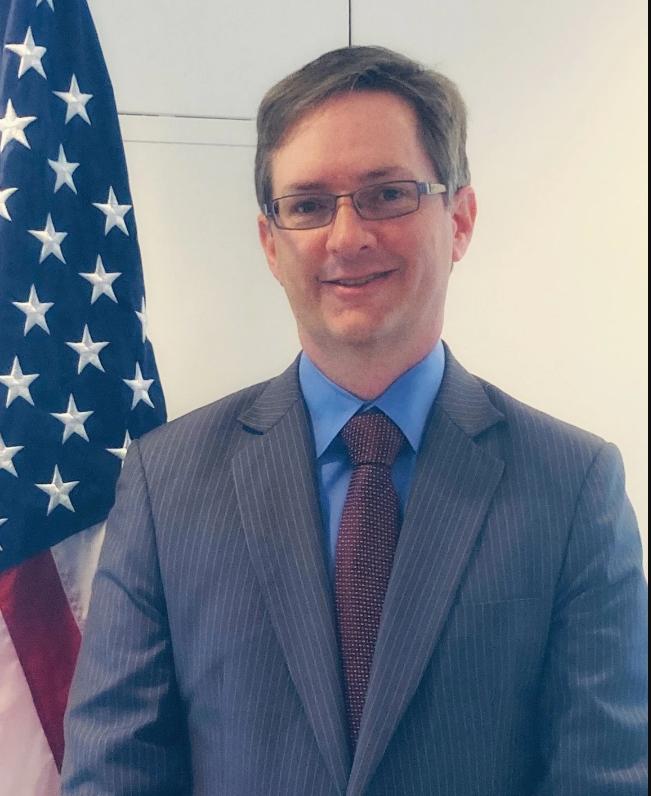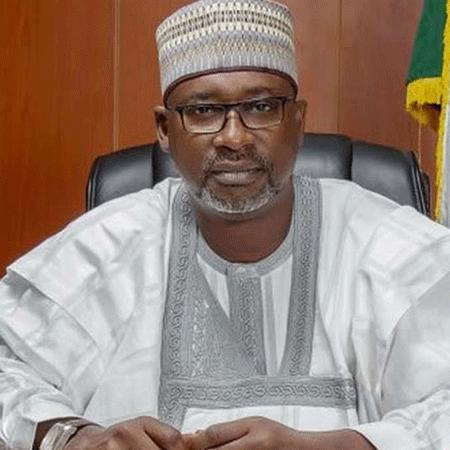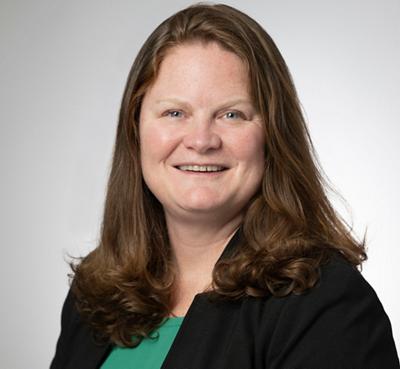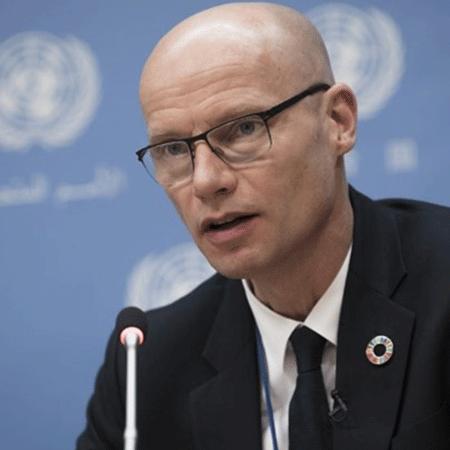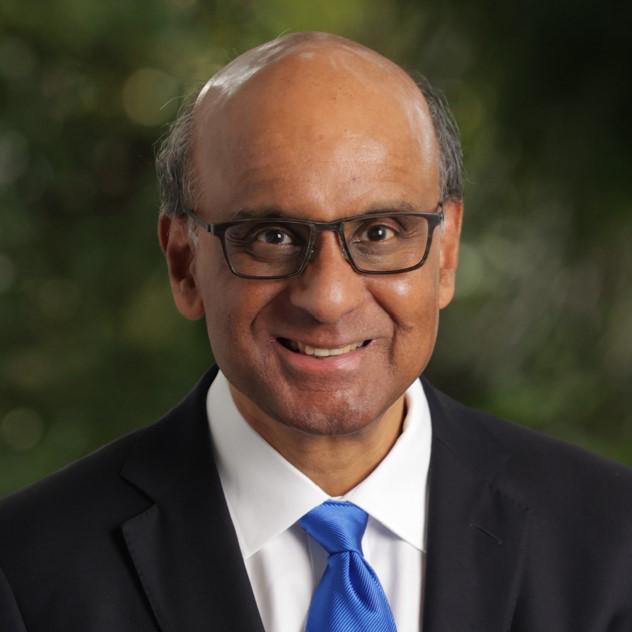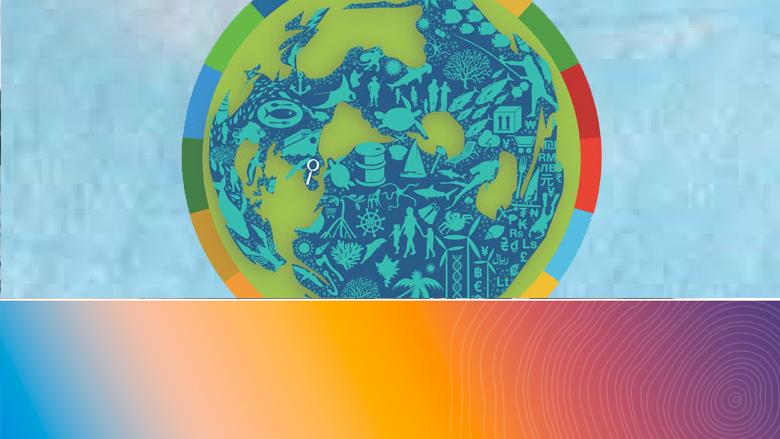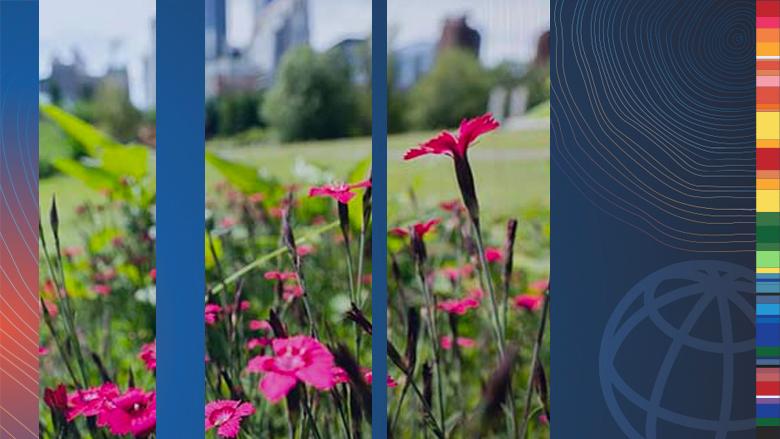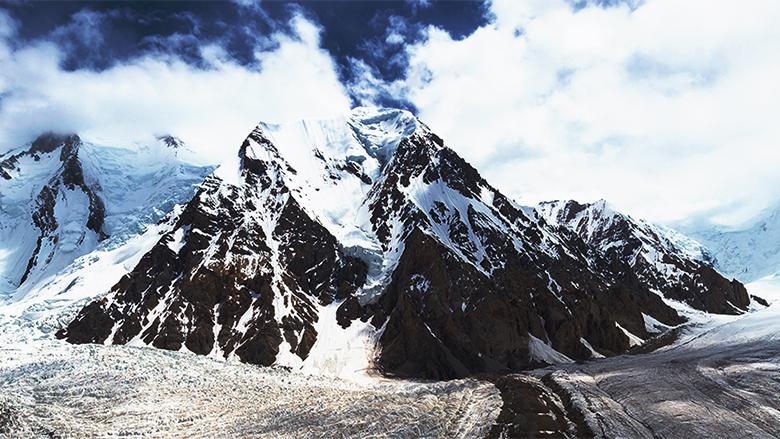The Future of Water Storage

What the Future Has in Store: A New Paradigm for Water Storage
- ABOUT THE EVENT
- AGENDA
- TRANSCRIPT
Risks to water security are the greatest threat to attaining global sustainability goals. Many countries lack water infrastructure—including storage – to be able to provide water when and where it is needed. Natural disasters are occurring with alarming frequency. Climate change is disrupting global weather patterns, triggering increasingly extreme weather events, including floods, droughts, and heatwaves, exacerbating water scarcity and causing catastrophic suffering from Pakistan to the United States to Kenya. Global heating of 2 to 4 °C could cause up to four billion people to experience some level of water scarcity. Historically, water storage systems have enabled humans to thrive in a range of climatic conditions. But as the climate changes, many water storage systems are becoming—or in some regions have already become—no longer fit for purpose.
This event serves as an urgent appeal to practitioners at every level, both public and private, and across sectors, to come together to champion integrated water storage solutions—natural, built, and hybrid—to meet a range of human, economic, and environmental needs for the twenty-first century. It also serves as a launching ground for the newly released Water GP publication called What the Future Has in Store: A New Paradigm for Water Storage which draws from the World Bank’s decades of global experience with integrated water resource management. The report provides a practical framework to help with everything from evaluating long-term investments in natural and built infrastructure to decision-making under uncertainty to integrated planning techniques, and international case studies.
[Saroj Kumar Jha]
Good morning, good afternoon, good evening to everyone who is connected to this very important launch of the Global Report on Water Storage, prepared by the World Bank, but working very closely with partners around the world. We are very honored to have a very distinguished panel for today's launch of the report. We are connected by His Excellency, the Minister of Water Resources from Nigeria virtually, and also the Secretary General of World Meteorological Organization, Mr. Taalas, from Geneva virtually, and we will have them on the screen during the panel discussion. Let me first invite our own Managing Director for Developing Policy and Partnerships, Ms. Mari Pangestu, for our opening remarks. Mari, the floor is yours.
[Mari Pangestu]
Thank you, Saroj. Good morning, good afternoon, wherever you are, and thank you all for joining us for this important conversation on the role of water storage in ensuring a sustainable future for all of us. First, I want to note that we are deeply concerned following the earthquake that has impacted communities in the Republic of Turkey and in Syria. Our teams are monitoring the situation closely and preparing for timely support. I would like to start by welcoming the various guests who have joined us today for this discussion. His Excellency Adamu and Secretary General of WMO, Taalas, who are joining us remotely. We look forward to welcoming you both in person next time. We welcome in person, Senior Minister Tharman, who is accompanied by his better half, Jane, and Deputy Assistant Secretary Thompson and Special Envoy Ovink. Thank you for joining us today.
I want to just make three points in my opening remarks. The first point is why is water storage important? I think we all know that as we see climate extremes escalate, water storage becomes an important tool for adapting to climate change and other water related challenges. I mean, there's lots of scary numbers out there that tells you that over the last 20 years, 1.3 billion people have been adversely affected by droughts and 1.65 billion have been adversely affected by floods, and this has huge economic and environmental losses. In some parts of the world, as we saw the floods in Pakistan, the weather can erase decades of gains in human development in a matter of days. Climate change is also making rainfall be very unpredictable and as a result, we have issues about reliable water supplies that is affecting lives, as well as farmers being less productive. We know that fresh water storage is at the heart of adapting to climate change.
Most obviously, by saving water for drier times, as well as reducing the impact of floods. It also helps regulate water flows to support energy, transportation and agriculture and other sectors. In the years ahead, green, resilient and inclusive development will have to be anchored in more resilient approaches to water storage. This is why water storage is important.
The second point I wanted to make is that while we recognize the importance of water storage and the importance of it in our future, the world is actually facing growing water storage gap and just as we need to have more storage, actual volume of freshwater storage is declining, and the storage in nature is declining. That's groundwater, wetlands, and glaciers, for example. We're also seeing an underinvestment in the maintenance of existing built storage, as well as poor planning, which does not take an integrated approach.
The third point, which is the discussion of today, what about the future, how can we find solutions, how can we develop and drive a holistic water storage strategy that brings nature and build storage together, to provide a water secure future for generations to come? The publication that we will be talking about today, calls for developing and driving multi-sector solutions to address the water storage gaps and hopefully deliver for us a green resilient development. We look forward to hearing from all of you today as we explore these issues. Thank you.
[Saroj Kumar Jha]
Thank you very much, Mari. Indeed, the grid basically is guiding World Bank’s work around the world now for addressing multiple crisis that our countries are facing. That brings me to our next speaker who needs no introductions, Senior Minister Tharman, you've been part of the global transformation that we have witnessed for the last so many years and we couldn't find a better person than you to come and address this launch of the Global Report on Water Storage. Senior Minister, welcome, and the floor is yours.
[Tharman Shanmugaratnam]
Good morning, Managing Director Pangestu, Saroj and team, and our distinguished guests are here. Thank you for inviting me to join you. It was partly opportunistic, and I value this opportunity to lend support to the World Bank's initiative to urge you to in fact expand your envelope globally on water and its intersections with the other challenges of the global commons, and to recognize the remarkable work that the World Bank has been doing. The knowledge that's being accumulated, the knowledge that's being shared, the capacity building and the ability of the World Bank to multiply capabilities globally. I believe in the years to come, the World Bank's role in each of these regards can only grow and has to grow. In particular, your ability to multiply capabilities and resources to tackle the challenges of the global commons.
We know we have a crisis in water. No one can deny it. We know about the droughts, floods, heat waves, wildfires that are increasing in intensity and frequency. We know we have slow moving challenges quite apart from the extreme events. We know that we still have a huge challenge of providing access to safely managed water. More than 2 billion people globally don't have safely managed water. We know the consequences of that. We know that one child under the age of five dies every minute from diarrhea and the consequences of water that's contaminated, it's remarkable, it's untenable morally, it's untenable economically and it's untenable from the point of view of our whole objective of governing our own societies and governing the global system to achieve our core objectives, every one of the SDGs. So, we know we have a crisis, the bad news is that the crisis will grow. The bad news is the crisis is now very likely to grow. The reasons have to do not just with local or regional mismanagement of water, but the fact that we now face a crisis that is intrinsically of a global nature.
We have altered the global water cycle through mismanagement locally, regionally, and globally. We've altered the global water cycle or hydrological cycle, and it is now having these ramifications across the world wherever we live. It's not just the extreme events we see in front of us with our own eyes, it is the fact that we now have a systemic driving force for the water crisis and all the knock-on effects that the water crisis has for climate change, for the loss of biodiversity and for our core economic and social objectives as embodied in the SDGs. So the crisis is going to grow, it's systematic, not just episodic, it's not just a series of random shocks, it's now systemic and we have to pay particular attention to the fact that we cannot manage climate change without fixing water. We will not achieve our climate mitigation objectives, all climate adaptation objectives without managing water far more efficiently, far more equitably and justly, and far more sustainably. That nexus between water, climate change and biodiversity has to be mainstreamed into governance, economic and social governance at a national level and global governance.
We have to mainstream water and its nexus with climate change and biodiversity into our policy planning, our delivery systems and our whole thinking. That's what we have to do. The good news is that we do have the scientific knowledge, we do have the capabilities and the knowledge of what capabilities are required everywhere in the world. And in fact we do have the finance, there's no lack of finance in the global system. That's the good news. Our challenge is to organize those capabilities, the knowledge, the delivery capabilities and the finance, organize it collectively, nationally and globally so as to be able to deliver universal access to safe and clean water, to deliver far more efficient use of this precious finite resource already over exploited and to deliver sustainability, we just have to collectively organize ourselves. We have the resources, capabilities, we have to organize ourselves to deliver on this critical outcome that's going to cut across all the SDGs. Water sustainability and water justice cuts across all the SDGs. So that's the good news, we can achieve this. The resources are there, the capabilities are there, the knowledge is there, we can achieve it. I think what we'll have to be aware of as we approach this extremely complex and even wicked problem, wicked because of its intersections with so many other problems, what we have to be aware of is having complexity, the sheer scale and complexity of the challenge lead to an approach where we're always looking for perfection and the most comprehensive possible set of solutions, which of course, ideal, but it's going to take us a long time to get there. Avoid the perfect being the enemy, not just of the good, but the urgently necessary because this is urgent. The next decade is critical, absolutely critical. Avoid the perfect being the enemy of the urgently necessary. I think the way to do that therefore is to focus on the high potential opportunities that can already be realized. Focus on the high potential opportunities, the initiatives nationally and globally that will move the needle and can be achieved with existing technologies or adaptation of existing technologies, and where our capacities for delivery in fact exist if we organized them well enough.
We do have these high potential opportunities. Storage, which you've highlighted in this report. Critical challenge, not just built storage, repairing the built infrastructure in the advanced world, significantly expanding the built infrastructure in the developing world, but also protecting and restoring natural storage, as your report points out, and embarking on the hybrid approaches, managed aquifer recharge and the like.
Storage is critical. To put it very simply, many countries, most countries, the typical large developing country for instance, receives far more rainfall precipitation than is used. Even the expansive demand projections for the next 30 years, demand is going to grow because of urbanization and economic growth. But even with those demand projections, we receive more precipitation in most countries than we are using the water for. We've got to protect, capture all the rain, protect every source of water, treat it and distribute it far more efficiently and manage demand at the same time. This is a solvable problem, this is a solvable problem. We actually have adequate supply of freshwater. We need to catch every drop of it, treat it and distribute it far more efficiently and use it in agriculture, in industry and in households far more efficiently.
So storage is critical and I'm glad you're focusing on this issue and I'm glad you're taking a holistic approach as well, as Mari pointed out, focusing on the built infrastructure as part of a system that critically involves, in fact in the main natural storage, both groundwater as well as all the other forms of natural storage. Bear in mind that some of these areas of natural storage, some of these focus areas, wetlands for instance, and managed croplands, are also critical for climate mitigation. So, we're able to exploit that intersection between water and climate mitigation as we develop this holistic approach to storage. That's one high potential opportunity, storage.
Second high potential opportunity is we have to reduce the very large scale leakages and losses of water in municipal supply systems, what they call non-revenue water, immense scale, even in the most advanced countries, immense scale. The most advanced countries see between 30 to 70% of water lost through the municipal delivery systems. That can be tackled.
It can be tackled through better management, better management contracts within the public and private sector, investing in maintenance and future infrastructure upgrades and some new technologies, sensors and other technologies that can be deployed.
So, it's the second high potential opportunity and non-revenue water is a large source of water wastage.
Third, this huge opportunity for us to manage demand in a way that can deliver on equity, as well as efficiency and growth. Agriculture is of course, a huge opportunity. The scope for drip irrigation or precision agriculture is enormous, and we've got accompany that with incentives for farmers to not just use water more efficiently and intensively, but to avoid extensive use of water. So, provide incentives for farmers to save water and at the same time, increase yields and increase income. It's a huge opportunity in agriculture.
And fourthly, also with regard to demand management, there's enormous scope for recycling, recycling of all water within nations, but industrial water in particular, enormous scope for it.
The technologies exist, they need to be made affordable for every country and community and that's where the World Bank again has the expertise and the delivery capabilities and the multiplication capabilities. We just focus on those big high potential opportunities, storage, investing in more efficient and less loss making water distribution, agriculture that uses water efficiently, in other words, think not just about land productivity, but water productivity, and wastewater recycling. Those are big needle movers, the technologies exist, we can mobilize the finance for it, we can spread capabilities and that's the good news about water. We actually can solve this if we organize ourselves well enough and it just requires a change of thinking fundamentally in economic and social governance and environmental governance. We have to value water and I'm not going to go on at length about it, but we're just not valuing water. We are not pricing it appropriately, not just to cover the costs of producing and distributing water, but to reflect the externalities involved for water, the spillovers to every other sector.
We've got to value water and make it part of decision making. We've got to invest more and we've got to finance investments. The finance exists, the fact that water has an inherent challenge of being costly upfront and having long durations of payback in most water delivery systems, is not insolvable. The methods exist to have an appropriate distribution of risk and reward between the public and private sector, it's not insolvable at all. We have to address it, it's a nut that can be cracked.
And the opportunities for regulation, opportunities for regulation so as to be able to conserve supply and manage demand are also there. All these are part of economic governance and they have to be mainstreamed. How do we regulate to ensure that we mobilize private finance and we have long-term investments with reasonable payback for the private sector, but continued investment in maintenance and upgrade of infrastructure.
The whole World Bank lexicon and knowledge base on blended finance, on how you de-risk investments so as to be able to scale it up comes into play.
Finally, of course, we do need better global governances of what is intrinsically a global common good, a global hydrological cycle. We need better global governance and there are gaps in the system today that need to be plugged. There are approaches that have to be worked out over time, so that this is basically not a top-down multilateral decision, but it's a collective decision globally. But that can be developed, we can develop that new mission orientation in global governance to address what is in fact an addressable challenge and one that's central to all the SDGs. We can achieve this. We can have a water future that's far more equitable, far more efficient and more sustainable. Thank you very much for the opportunity to be with you this morning and I'm looking forward to listening to the panel. Thank you.
[Saroj Kumar Jha]
Thank you very much Mr. Tharman, for that inspiring address. And I have to confess that listening to you, I was also reflecting on the World Bank Group's water portfolio, is what, $62 billion portfolio, active portfolio across the World Bank, and it is indeed addressing those four high potential opportunities that you mentioned. But your message is spot on, and I think my colleagues who are in the room, many of them online connected through World Bank Live, and our partner countries around the world, I think one commitment to you is that we certainly want to take those four areas forward in our engagement with the countries. We will now move to the most exciting part of the launch, which is the presentation of the report by the two authors. Let me introduce Eileen Burke, Lead Water Resources Specialist, and Jacqueline Tront, Senior Water Resources Specialist, those who have been really the leads behind this report. Please welcome Eileen and Jackie.
[Jackie Tront]
Rainfall and river flows vary through space and time. For millennia, humankind has used water storage to manage this variability, from small tanks to large reservoirs, wetlands, to aquifers, we use storage in order to overcome this variability. In order to secure water, we're scaling up food production, industrialization, as well as the expansion of ever-growing and complex cities. We use water storage for energy production, as well as recreation and navigation. In short, water storage enables economic growth and human development. Unfortunately, we're actively losing storage. Natural storage is on the decline. We see that cities and farmlands are encroaching on floodplains and wetlands. We see that glaciers and snowpack are melting due to climate change. We also see that built storage is declining due to lack of maintenance, sedimentation of live storage and reservoirs, as well as a downturn in the building of new dams.
Just as demand is increasing due to population growth and development pressure, we see this decline in actual water storage. This is coming just at a time when we need storage more than ever to adapt to and mitigate climate change. As the previous speakers mentioned, we need water storage to adapt to increasingly frequent and intense floods and droughts. We need storage to adapt to increasing water scarcity and variability. We also need water storage to mitigate climate change, we need to be able to generate hydropower, we need to be able to enable wind and solar energy to connect to the grid, and we also need to be able to store energy through pump storage. This gap is growing, and the current approaches are not working, something needs to change. We need a new paradigm for water storage. This report features principles, tools and examples to approach development and management of storage in a new way. We'll take you through four of these principles today.
[Eileen Burke]
The first step towards advancing a new paradigm for water storage is addressing what we think to be storage. We need to look at all storage types, large and small, hybrid, natural and built, storage above ground and underground. While humans have been building storage for millennia, it's nature that provides the vast majority of storage on Earth, 99% to be exact. In addition, because of climate change, the past is no longer a reliable predictor of future hydrology. For this reason, this puts a rapid premium on the collection of data so that we can better understand where water exists, where it's being stored and how it's being used. While this may seem like a simple principle, in reality, storage is being developed across the world, across a range of sectors, by a range of stakeholders without one authority in any country with a view of where storage exists. We need a rapid mapping of water storage on a basin by basin basis.
The second step outlined in the report is to understand storage as a system. Storage, no matter the type, exists as part of a broader water cycle, as the previous speakers have mentioned. Developing and managing them as an integrated system, rather than standalone facilities may allow us to gain more from storage. Noting that especially systems may be more resilient to shocks such as storms, and other hydro variability caused by climate change, then standalone alone facilities would be. What the future has in store provides a framework and processes that stakeholders can follow to better understand storage as a system to make sure their development needs are being met. This framework in the report is designed to be used in either low data or high data environments, to be used at the sub-basin, basin or trans-boundary level. Noting that cooperation over water storage is increasing in importance, given the vast array of challenges that are facing the water sector.
The third step we can take towards a new paradigm is how we think about storage. Moving from volumes to services, rather than saying say, I need a certain volume of water for my irrigation, we can take a step back, look at the range of development needs across sectors and look how storage or other water management can best meet those needs. Jackie already took you through the three major pillars of services from water storage, improving water availability, reducing flood impacts, and regulating water flow. By looking across these services and across sectors, we can get more from our storage.
Finally, the fourth area in which we can advance a new storage paradigm is looking to get more from our existing storage. The needs to close the water storage gap are great, but resources are limited, hence the need for efficiency.
The report provides an array of methods and examples for ways in which clients can work to get more from their existing storage.
First, they can look to re-operate storage, to make sure that storage is providing and meeting the development needs now, rather than those at the time that the storage was originally designed. We can rehabilitate storage, both natural and built, to provide a range of services. We can look to retrofit storage, to add additional functionality to that storage, such as adding flood control or hydropower to an irrigation dam, or adding new technology to that storage, such as floating solar panels, of which Singapore is a natural leader in. Where needed, where we need increased reliability of flows for things like large mega cities, we can look to raise new storage. Finally, we must look to reform our institutions so that they're working across sectors to meet these new emerging challenges that Minister Tharman spoke about earlier.
[Jackie Tront]
In summary, the new planning framework helps us to solve water challenges in a more integrated way. It helps us to bring in natural and built storage into a systems approach, so that we can make more from our water.
The report also provides examples of countries and communities that are using principles of this framework already today. It features examples from India and the United States that are re-operating their infrastructure in order to better protect from floods and droughts. It features an example from Pakistan, where they're redesigning infrastructure in order to protect biodiversity and leverage ecosystem services. It features an example from Mexico, where they're improving sustainable land management in order to make the most of natural storage. It also features an example from South Africa and Namibia, where they're better using aquifers as part of the planning framework to help protect against climate shocks.
We all have a role to play in the new paradigm for water storage, from ministries of finance to ministries of water, across sectors, communities, the private sector and authorities, we invite you all to use these tools and help to close the water storage gap.
[Saroj Kumar Jha]
Thank you, Eileen, and thank you Jackie very much for the report and the presentation.
May I now invite Deputy Assistant Secretary, Mr. Thompson, to kindly come to the stage, and also our Managing Director, Mari Pangestu, and Dutch Special Envoy for International Waters, Henk, please come on the stage.
Can someone confirm that His Excellency, Minister Adamu, is online? Yes. Great. And Secretary-General Taalas? Great. I want to thank you both first of all for joining us remotely, and we will begin this panel discussion with a question to you, Your Excellency, Minister of Water Resources, Mr. Suleiman Hussein Adamu. It's very good to see you, we met briefly in COP27 on the margins, and we had good discussions. My question to you, what are the sort of the bigger challenges Nigeria is facing with regards to water storage?
[Suleiman Hussein Adamu]
Well, thank you very much. I hope we can hear you very well?
[Saroj Kumar Jha]
We can hear you very well, Excellency. Thank you very much.
[Suleiman Hussein Adamu]
Great. First of all, let me congratulate you on the launching of this document and to say that I'm very glad to see that there's a strong shift now from too much discussion on emissions, to discussions about how climate change relates to water. I think one of the areas where we see the quickest impact of climate change is in our water resources, and I'm glad that this is taking a prominent position.
In Nigeria, we realized quite long ago, when we had droughts in the '70s, that the issue of water storage was going to be of great importance. Since then, a lot of investment has been made across the country, building dams and reservoirs, especially as a great part of our people and our agrarian area is in the Sahara region where the rainfall pattern is quite erratic. We have found ourselves in a situation where we have rivers that have silted up over time. We have rivers that are seasonal, they're non-perennial, and therefore called for storage. And then in our effort to build the storage systems, which are quite a number, we have issues with excess sedimentation leading to reduced storage in our rivers and on our reservoirs. Of course, with the huge population also, the demand for water has gone very high for both the drinking and agriculture especially, irrigation agriculture. Also, our energy crisis requests that we also do a lot more to do with renewable energy, especially hydro. As a matter of fact, the first major investment that was made by Nigeria in storing water was our [inaudible] dam so that we could provide hydropower supply.
Issues like the capacity building to maintain the infrastructure that we have, coordinated reservoir operations, are also key to balance the demand between water supply irrigation and flooding, whereas it's a lot of cases the reservoirs are meant to check flooding. In a lot of cases, we found some years where we had excess rainfall and because of the storage capacity of the reservoirs has reduced, we found ourselves opening more gates and valves over time, and downstream communities are seriously affected when that happens. Even when there's no natural flood, some of our reservoirs tend to create this kind of flooding situations downstream.
Issues like data related to connecting the reservoir operations most especially, I think it's an issue and, over time, dams have become very expensive to maintain and to build and therefore funding has been quite a challenge as well, in some of these areas.
Then we have political issues, downstream communities, even where we want to build some new reservoirs where we need them. I think experiences from previous situations long before we had considered greater river basin management. Some downstream committees tend to feel short-changed, and therefore it's been difficult sometimes to construct some new reservoirs that we feel are really, really needed. It's becoming quite explosive, politically explosive.
A few things that I can say have been telling the challenges, but I think by and large, I think storing water has been of major benefit to us, we have quite a number of large-scale irrigation systems, which would not have been possible without some of the storage that we've invested on years before. So, just a few things I could say about that.
[Saroj Kumar Jha]
Thank you very much, Minister Adamu. And we've also noted the two challenges you mentioned, about data and also building a more cooperative understanding among the communities, both upstream and downstream, as you begin to look at storage options. But we're also very happy to see how Nigeria is providing leadership on the storage agenda. As the World Bank, we're very happy to be part of that effort, under your leadership.
Let me turn to Deputy Assistant Secretary John Thompson, for the question is to you. Sir, as the United States moves forward on water under the new US global water strategy and seeks to advance an ambitious climate adaptation agenda, how do you approach the issue of water storage? What opportunities or challenges does it hold for your efforts?
[John Thompson]
Thank you, Saroj. I want to start by saying congratulations to you and your team, for this report, which I think really helps us understand the importance of water storage and what we need to do to improve water security around the world. This is, of course, particularly important as we face increasing impacts from climate change all the time. Very happy to be on this diverse panel, which I think really highlights one of the points I want to make, which is that each country has a different experience with water, but we all rely on water storage to deliver the water that we need.
From a US perspective, storage and water security are areas for engagement with many, many partners all over the world, because we're all facing difficult challenges and the challenges have been increasing over time. Let me just share a US example from just last month. I'm sure you've seen it, but in California, following three of the driest years on record, a series of atmospheric rivers triggered flooding in numerous communities and killed 19 people. Experts are calling this a hydrologic whiplash, extreme drought, then flooding in exactly the same place. Effective water storage is going to be absolutely vital to addressing what may become the new normal due to climate change.
As the United States deals with these issues at home, the Biden administration is thinking globally and is working to support a water secure world. That's why President Biden's emergency plan for adaptation and resilience or PREPARE, as we like to call it, includes support for the development, delivery and use of climate information as part of water resources management and for the rapid increase of water storage capacity, including through improved management, as well as importantly, nature-based solutions.
That brings me to my second point, as this report makes clear, now is the time to act, we can't wait. In the United States, infrastructure investments made really a century ago, have allowed us to thrive in parts of the American West, where water availability is not a given. Today we're still guided by and debating water sharing and allocation agreements made over a hundred years ago. And situations like these where populations rely on water infrastructure built long ago are very common all over the world. As we work towards a climate resilient future, we need to transform water systems to meet not only today's demands, but the demands of the future, which are hard to predict. Effective water storage will be critical and it's important we take a comprehensive view of water storage, including working with natural storage in snowpack, wetlands and groundwater. This gives us a better sense of what steps we can take today to manage our needs for tomorrow. I'm very pleased to be a part of this effort, thank you very much for inviting me and allowing me to participate on this panel. Thank you.
[Saroj Kumar Jha]
Thank you very much, John. The next goes to our own managing director and I have to ask this question, I have vested interest in this question asking to you. This question is on how can the World Bank support client countries to close the water storage gap, considering that water ministries are often competing against other national priorities for very scarce public resources?
[Mari Pangestu]
Thank you, Saroj, for that question. Let me just, of course, first congratulate and thank Eileen and Jacqueline and the team, for a really excellent report.
One thing I would just start with before answering your very difficult question, is that the World Bank has been doing a lot on water, including water storage. I think we have a solid track record of about 36 billion in active storage investments worldwide, and 50 billion of which are in Africa, and they're across many areas. We have been trying to make it more systematic if you like. I was in Nepal and even with all the water they have, they have shortage for agriculture and so they have an issue there. So, one of the projects we had there was actually an urban municipal water project, but they built in the watershed management included in the project as a way to systemize it. I was in Vietnam, Minister Tharman mentioned about the demand side, we are working in the Mekong River Delta and we have worked with the Vietnamese government to come up with a low carbon rice which uses less water, less fertilizer, less pesticide and so on.
I think going to the point being made, we need a more systematic approach, and that requires coordination in institution and governance and data. This is really the challenge. Political economy, I've been in government before, if you want a systematic approach, it's coordination across sectors, it's ministries of finance, it's local government and so on. I think this is where I just want to make a couple of points on what we're going to be doing moving forward.
This morning I woke up and I counted how many of the CCDRs actually prioritize water, and it's actually 20 out of the 25. So, the majority of our climate, country climate development reports, which are the diagnostic tool to identify the priority issues in climate that need to be addressed, 20 out of 25, identify water. The moment that's there, it becomes hopefully a government commitment that puts water at the center of the climate change agenda. That's the beginning for an integrated approach, I would say, for water. I would encourage our teams to work through the CCDRs to identify the priorities, the needs and what the storage would be in there, apart from the other areas that need to be addressed in water. From there, you identify what needs to be done, policies, regulations, institutional changes, investment needs and financing and how much would that come from the World Bank, how much would that come from co-financing, parallel financing and other sources of finance? But it enables you, I think, to have a platform where water is center to the climate change and development.
Development is the resilience and the inclusive part of our agenda, and a way forward that is systematic and hopefully provides the narrative. I think one of you mentioned earlier, the importance of data, to convince the beneficiaries, which are either the farmers or the people living downstream, et cetera, et cetera. The data needs to be there to provide the narrative to the policy makers and the water agencies, to convince the finance ministries and the others in the government that this is crucial for climate and development. I would just emphasize those areas that we are working on for the future and not just by ourselves, but together with the countries, stakeholders and all other potential sources of finance.
[Saroj Kumar Jha]
Thank you very much, Mari. So, water is already a priority in most countries we've worked, that's good news, and we would need to work closely with all the counterparts through a nationally led coordination structure that can help place water as an important development issue.
Next, I will turn to Henk. Henk is, as I introduced in the beginning, Special Envoy for International Water Affairs in the Royal Kingdom of Netherlands. The question to you, sir, is the report is calling for a global change in paradigm for water storage, which is no small task. How can we as global community, go about changing the trajectory of water development globally, Henk?
[Henk Ovink]
Not a small title, not a small ask, of course. Thanks so much, Saroj. First, Eileen and Jacqueline, thanks so much and congratulations on the report and the whole team, of course, good to read. It is, and all the speakers already said, this of critical importance and it's good to also read through the report. Luckily, it was online before the launch, so you could read it on my way down, looking through the data, and again, as we know, groundwater as the unseen being tapped into and being abused and polluted and becoming more saline, is not our freshwater bank anymore. The tipping points that we see there, that unseen capacity as part of the storage, is of critical importance.
To your point, new paradigm in your title or you get my attention, because this is what we are looking for. We need a problem driven approach that you say that is also systemic. I think these are the things that are missing, finding the inter linkages across everything we value and we go silo by silo, we love our silos in that sense, and making us more vulnerable with every dollar, euro, yen we spent.
Second thing you say, we're at the crossroads, we need more storage, which of course, is true because we lost so much, and the demand is only increasing.
The other thing is like Senior Minister Tharman said, we crossed the hydrological cycle, we changed it perhaps forever. Can we ever change it back again?
I think we're all saying basically the same thing, so we all agree for quite a while now and where does it lead us? So more and more you could say 2015 was a critical year, we had 17 sustainable development goals. All in all, a very comprehensive agenda, and here we went silo by silo.
Your report puts a spotlight on the vulnerability, as well as the necessity of systemic, cross-sectoral, cross-scale, global-to-local-and-back-again approach, understanding those risks across all. It made me think also a little bit about day zero in Cape Town, it got all the attention in the media, very nice. But what did change? Okay, they fixed the pipes, but inequalities went up. During day zero, you couldn't travel the mountain because the pumping of the groundwater was so intense and immense for those who could actually afford. Not a systems approach but a siloed approach, and your report definitely calls to that systems report.
The paradigm change is clearly in your thinking, and you know that on my thinking is the UN 2023 Water Conference, it's six weeks from now, so I would say at four weeks to prepare a massive commitment across the silos that we have. Now, how are we going to put your words, this report into practice, into commitments and into actions that the outcome of this conference and the work you're presenting with the report, don't become hollow phrases. I think this is the challenge we all face, how can we turn our assessments that we've been agreeing on for so long, into something that really is comprehensive, that is holistic, and how holism can actually turn into impactful action across sectors and silos, reaching the most vulnerable first and foremost. For that, I'd like to offer you our helping hands, not only as a great partner in the Bank, but definitely also to the water practice, but also as a co-host to the UN 2023 Water Conference. We have a couple of days, it's scary, and my sleep is getting less, before this conference is there. But with this assessment, with such a report that also provides pathway forward, what is it that we are actually going to put on the table? What are first, next steps? So that is one, what are they, can we imagine them from this holistic approach? And second, how can we use the conference not only as a place where those commitments come together, but definitely also as the safe space where those actors can come together. Perhaps, we have to organize something there. Who do we need in the room? I need your bold thinking there to ensure that the commitments that come out of this conference really drive change and not words.
I'm scared beyond imagination, that the last day of the conference will be of course this massive festival and we have music and youth and cameras and then April 1st, we wake up and we think it's fool's day and it cannot happen, and it will not happen. We need to put your words, your assessments, your practice, your feet on the ground, your capacity as the Bank, to bring the world together, our capacities, our countries, and others to bring the world together to make those commitments real. So we're here, but we also need to hear from you how to make this work. Thank you.
[Saroj Kumar Jha]
Thank you very much, Henk. We do hope that the launch of this report today and also learning from Nigeria's experience, more and more countries will include this in their commitments for the water agenda for action coming into the March conference. Because ultimately what we need is strong government leadership on this agenda and I hope that it is dually reflected in the water agenda for action. So, both you and there are also colleagues from the President UN General Assemblies Office. If we could help spread this word, I think it'll be extremely helpful.
I would like to now turn to Secretary General of the World Meteorological Organization, Petteri Taalas, the question to you is taking a more integrated approach to water storage management and development requires a great deal of meteorological and hydrologic data. What should we be doing as global community around water and climate data?
[Petteri Taalas]
First of all, thanks Saroj and Mari for the invitation to address this meeting and thanks for the excellent corporation that we are having between WMO and World Bank, I'm very pleased with that.
In English speaking countries, we are talking about global warming and that's totally a misleading term because the biggest impacts of climate change, they're very much fell through water, it's drought, the flooding, melting of glaciers. As the refugee minister just mentioned, we have seen severe drought hitting Europe, China and USA during recent years, and of course, what's happening in the Horn of Africa, that's even more dramatic, and then we have seen these flooding events in Pakistan and Germany, as an example.
The WMO has published its first status of water report, where we showed what's happening to the groundwater resources. We have seen a decrease in many highly densely populated areas and we have also started seeing more often drought in some parts of the world and flooding in other parts of the world.
This melting of glaciers game we have already lost. We have such a high concentration of carbon dioxide that we expect to see a melting of glaciers to continue for the coming millennia. And the same is going to happen for sea level rise. So, that's bad news when it comes to water resources.
Here in Switzerland, during last summer, we lost 6.2% of glacier mass, which was highest ever since we started recording the glacier masses, and that was a result of the heat wave here. As some of you already mentioned, the population growth is also another problem besides climate change, and that's why we already have today more than two billion people who are suffering from water crisis and we expect that to be doubled during the coming decades.
From our side, we have one very important initiative on the table, early warning services for all. We get the mandate from Secretary-General Guterres to prepare an action plan so that, in five years, we would have 100% coverage of proper early warning services. That covers very much also this water component, flooding, drought, water resource management component as well.
From the WMO side, we are very much promoting better cooperation between hydrological experts and meteorological experts at the country level.
In the meteorology field, we have been lucky to create a global real time data exchange system, and that's also something which is very much needed in the field of hydrology. At the moment, only 20% of the hydrological data is freely exchanged, and that's a great loss for us globally and it's also great loss economically, so that's what we are very much promoting. I share the concerns of Henk, that this water conference that we will have in a few weeks, we should pay very much attention to the outcomes of that conference, concrete outcomes.
For us, this early warning services for all is one of the things that we would like to see promoted. Also, at the moment the climate models that we are using for estimating what's going to happen in the future, they are not good enough to describe the hydrological cycle in a proper way. We need to go to kilometer-scale climate modeling to be able to describe what's going to happen to rainfall in the future. That's still missing, and we should create a center, virtual center to join forces, super computing resources and go to such modeling. Then, we could also describe what's going to happen to the weather extremes in the future, which we cannot do with the current climate models.
Thanks again for this great report and thanks for the great cooperation with you and I'm looking forward to the water conference and better cooperation with you and the Bank. Thank you.
[Saroj Kumar Jha]
Thank you very much, Secretary-General Taalas. Yes, indeed, many of the ideas that you mentioned, we would like to follow up on this going forward because we are investing a lot of resources in building better meteorological and hydrological information system at the country level where we are already working together, but we can continue the discussion.
I'm very conscious of time. At 10 o'clock, the World Bank Live channel will close, we have a hard stop. We have two minutes left. I want to take one question that has come from the live audience globally, which I think is a very important question. What role can the indigenous technology play on the above subject, which is about the water storage? Maybe Eileen, you want to take that question?
[Eileen Burke]
Thanks Saroj, and thanks to our participants from World Bank Live that asked, and all of you on World Bank Live who have been participating with us today. The answer is that indigenous knowledge is incredibly important and it's part of the systems approach that we are describing in the report.
Anyone who's lived anywhere that relies on indigenous technology, knows very well the power and worth of this technology. We actually have a case study in the report on Sri Lanka, on the issues that are experienced when the ancient tanks that are the source of a local drinking water and irrigation water and so many other services for the villages, are repaired on a tank-by-tank basis, instead of a systems basis, and the challenges that that's posing for the system. Recognizing the need to approach the reintegration in some cases, rehabilitation of these tanks and looking at the hydrology as a system to get them to function in the way that they originally functioned, provide the full range of services. Thanks.
[Saroj Kumar Jha]
Thank you, Eileen. We are already cut off, I guess, on the World Bank Live, but I do want to take the last 30 seconds to thank you, His Excellency, Minister Adamu, Secretary
-General Taalas from the WMO, and Senior Minister Tharman, here in the room, Deputy Assistant Secretary Thompson, my very dear friend, Henk, we are working together a lot for the water conference these days, and our own Managing Director, Mari Pangestu, and all of you who connected to this live launch of the storage report. Thank you very much.
Learning Resources
Read the Chat
Welcome everyone! I’m Zubedah Robinson with the World Bank and I will be moderating today’s live chat. We also have Kimberly Lyon, Water Resources Management Specialist at World Bank, and subject matter expert who will be responding to some of you questions in the chat.
We will start the event in a few minutes, so please introduce yourself and where you are joining from.
While we wait for the event to begin, learn more about our new report What the Future Has in Store: A New Paradigm for Water Storage which was published today. The report is an urgent appeal at practitioners at every level, both public and private, and across sectors, to come together to champion integrated water storage solutions—natural, built, and hybrid—to meet a range of human, economic, and environmental needs for the twenty-first century.
You can download and read the full report, here: documents.worldbank.org/...
Zubedah Robinson (Moderator)
Hi everyone! Thanks for joining our conversation. I look forward to answering your questions!
Kimberly N. Lyon (Expert)
Listed on this page, you can see the speakers participating in today’s discussion. The event will begin with introductory remarks from Saroj Kumar Jha, the Global Director for the Water Global Practice, World Bank Group. It will then be followed my welcome remarks by Mari Pangestu Managing Director, Development Policy and Partnerships, World Bank and opening remarks by Tharman Shanmugaratnam Senior Minister, Singapore; Chair, G20 Eminent Persons Group on Global Financial Governance (2017-2018). After that, there will be fast paced ignite-style presentation What the Future Has in Store: A New Paradigm for Water Storage by Jacqueline Tront and Eileen Burke.
Zubedah Robinson (Moderator)
The report is a global call to action on water storage and offers detailed recommendations for policy makers by setting the criteria for success, advocating an integrated, strategic approach that begins with a rigorous definition of the problem and prioritizing efficient solution outcomes that benefit the largest range of stakeholders. The report is particularly beneficial for ministries of finance and planners, line ministries, locals governments, storage operators and water users, lawmakers, transboundary river basin organizations and development partners and financiers. A more detailed policy overview from the report, can be found here: documents.worldbank.org/...
Zubedah Robinson (Moderator)
Tharman Shanmugaratnam, Senior Minister, Singapore is now giving remarks on the urgency of Water. The next decade is critical.
Zubedah Robinson (Moderator)
Why are Large ram Pumps (such as the Venturo) not being considered for sustainable water pumping and storage and even sustainable water supply? Surely with the push on reducing our energy consumption and green technology, utilising a pump that doesn't use any fuel or electricity would make sense?
Jacob
Thank you for the suggestion. While the report does not specifically mention the potential of ram pumps, it provides a guiding framework for early planning of water storage (and indeed water resources management) interventions that deliberately starts from a technology-neutral place to encourage water managers to think more inclusively about the range of options that may help them achieve their objectives. One of our teams is also currently working on some guidance for World Bank teams on options for retrofitting and reoperating existing storage, including the potential use of ram pumps in some applications. -- Kimberly Lyon, Water Resources Management Specialist
Kimberly N. Lyon (Expert)
Thank you! Is there a way by collecting condensed clouds in the atmosphere?
Ross Larbi
There are technologies that can produce potable water from surrounding air or that harvest fog. We don’t discuss these specifically in the report, but our water specialists are always on the look out for new innovations and try to encourage their use where appropriate. -- Kimberly Lyon, Water Resources Management Specialist
Kimberly N. Lyon (Expert)
At the stage now is an ignite-style presentation What the Future Has in Store: A New Paradigm for Water Storage by Jacqueline Tront and Eileen Burke. We need storage to adapt to increasing water scarcity and mitigate climate change. Nature provides the vast majority of storage, at 99%.
Zubedah Robinson (Moderator)
Water storage is clearly needed to meet needs for growing populations, but how can be ensure that it is being done in a way that protects the environment for future generations
Amanda Loeffen
Kimberly N. Lyon (Expert)
Here are some key messages from the report:
1. As climate extremes escalate, water storage is becoming an increasingly vital tool for adapting to climate change, as well as other water-related challenges.
2. Just as world populations need more storage, the volume of freshwater storage is in decline, creating an international crisis: a global water storage gap.
3. What the Future Has in Store: A New Paradigm for Water Storage calls for developing and driving multi-sectoral solutions to the water storage gap, taking approaches that integrate needs and opportunities across the whole system, including natural, built, and hybrid storage, to support many instead of few, for generations to come.
Zubedah Robinson (Moderator)
Next up is a panel discussion featuring Mari Pangestu Managing Director, Development Policy and Partnerships, Suleiman Hussein Adamu, Minister of Water Resources, Nigeria, John Thompson, Deputy Assistant Secretary for Environment, Department of State’s Bureau of Oceans and International Environmental and Scientific Affairs, USA, Petteri Taalas, Secretary-General, World Meteorological Organization and Henk Ovink, Special Envoy for Water, Netherlands
Zubedah Robinson (Moderator)
In addressing the need for a new paradigm for water storage, can the option of a Public Private Partnership be considered, so that all stakeholders (public and private) are involved?
Dianne Rampadarath
Good question. The private sector absolutely has a role to play as a partner in developing water storage solutions. Private sector participation in water storage planning and management can come in many different forms, from management and operation contracts, to purchase of previously public assets, to the provision of equity or loan financing. Private sector players may also have considerable expertise and access to technology that may be difficult to acquire in a fully public venture. The best timing and modality of private sector involvement in water storage interventions will depend on many things. The report discusses some of these considerations in more detail.
Kimberly N. Lyon (Expert)
My two questions are:
Does the report include a section on water literacy and its role in shaping water storage behavior? Current scientific education still portrays the water cycle as being unaffected by human intervention. Though in the contemporary Anthropocene era this doesn’t hold true as humans play a critical role in disrupting as well as maintaining water cycle equilibrium.
Every country has their own traditional systems of water storage and supply which are sustainably attuned to local needs and environment. Can we not think of creating an information repository which compiles the knowledge of such water systems across the world? This will enable the sharing of successful local solutions and their adaptations in similar geographical and institutional setups.
Shivika Aggrawa
These are excellent questions. To your first question, the U.S. Geological Survey’s Water Science School is a great resource for people seeking to improve their water literacy. They also recently released an updated Water Cycle Diagram that includes anthropogenic activities. www.usgs.gov/...
On your second point, this is a wonderful suggestion. There are many examples of traditional water storage from around the world. We do feature Sri Lanka’s ancient system of tanks in the report as a case study, but there are many others, including dhaka pits in Sub-Saharan Africa, that we can learn from.
Kimberly N. Lyon (Expert)
In my country Zambia,most water sources are managed by water resources management authority called warma. This is an independent authority which just regulate water usage. However,in most developing households,most of the people use boreholes and Sept tank for our water and sewerage systems.
Francis Nkole
How can rain harvesting and ground water harvesting be integrated in order to provide constant supply to rural populations
Innocent mwansah
This is an important question. While the challenge before us is global, addressing needs around water access and water storage is inherently local. The needs, and likewise the solutions, for rural communities may differ greatly from those of urban dwellers. Distributed storage options such as rainwater harvesting, small farm tanks, or micro-dams have been used all around the world to improve rural water supply, but the best options depend on the water resources available, the needs of stakeholders, and other local conditions. Groundwater is also an important resource, one that currently supplies half the global domestic water needs. However, in some places, groundwater is being used faster than it is being recharged, and so given its great value, it is extremely important that groundwater is used at sustainable rates and that measures are taken to protect groundwater sources from contamination. You can read the report to find out more. -- Kimberly Lyon, Water Resources Management Specialist
Kimberly N. Lyon (Expert)
What are the main stakeholders to be effectively engage in order to achieve the transition to the new way of storage approach?
Belkadi Nadjib
This is an excellent question. Addressing the global water storage gap while making the changes society needs to make is a shared challenge. In the report, we encourage water practitioners at every level to rethink their approaches to developing, investing in, and managing storage. From decision‐makers at water ministries and ministries that are water-reliant, to engineers, ecologists, civil society, and academics, to project teams at the World Bank and other international development agencies, we all have a role to play in adopting and applying the key principles that characterize an integrated approach to storage.
Kimberly N. Lyon (Expert)
Henk Ovink, Special Envoy for Water, Netherlands reiterates global cooperation and collaboration on the water agenda and mentions the upcoming UN 2023 Water Conference as a good opportunity to deepen the dialogue on the topic.
Zubedah Robinson (Moderator)
Panelist Petteri Taalas Secretary-General, World Meteorological Organization shares more on UN action plan on early warning services and urges better cooperation that includes a data system.
Zubedah Robinson (Moderator)
Remember you can send your questions either through the live chat on this page or by using the hashtag #WhatTheFutureHasInStore on social media. Your questions will enter moderation queue for our expert to answer here in this chat.
Zubedah Robinson (Moderator)
That concludes the discussion. Thank you to all who tuned in! Check back soon on this page for the video replay of the event.
Learn more about this issue from a country level perspective, in a feature story here:
www.worldbank.org/...
and you can read this related blog: www.worldbank.org/...
Zubedah Robinson (Moderator)
You're all amazing with all the way you thinking, hope i could do something about the future
ENRIKO SIAHAAN
Everyone has a role to play, including you! Water managers need input from water users to inform planning decisions and to ensure that investments respond to the needs of stakeholders.
Kimberly N. Lyon (Expert)
A relevant opportunity for water-energy storage in the EU is by interconnecting existing reservoirs. You can find more information in the official EC report, and this is a sustainable practice as it does not require new barriers in rivers setis.ec.europa.eu/...
Emanuele Quaranta
Thank you for sharing!
Kimberly N. Lyon (Expert)
More World Bank Online Resources on Water
- Water
- Water Supply
- Sanitation
- Water in Agriculture
Event Replay
Sustainable Water Storage and River Basin Management for Resilience (COP27, November 2022)





